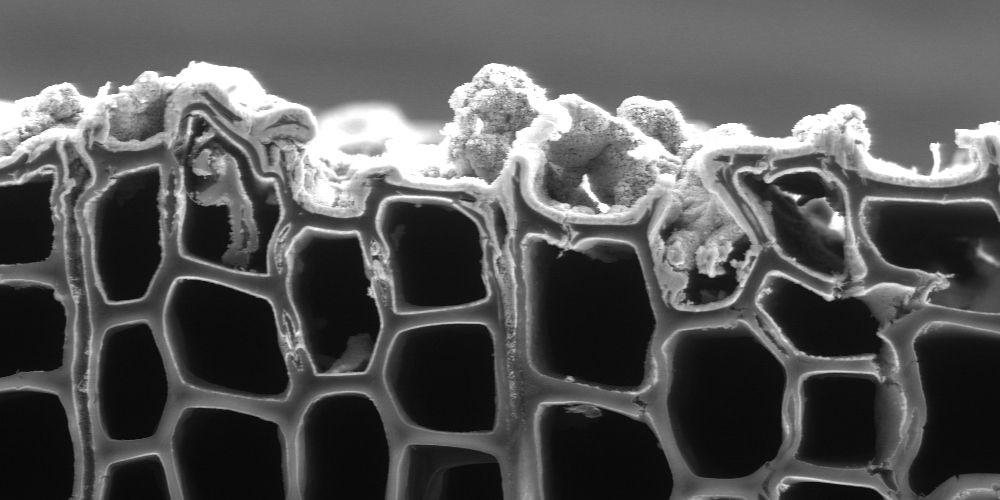Wood Surfaces & Interfaces - Dr. Benjamin Michen
The Wood Surfaces and Interfaces group explores the toolbox of nanotechnology to valorize this renewable material by improving its durability and equip it with novel functionalities.
While wood as bulk material is lightweight with outstanding mechanical properties, the wood surface provides a unique and well appreciated aesthetic appearance. But it is also the wood surface that is in direct contact with environmental factors that induce wood degradation by UV-light, water or biological attack. To combat this, we investigate novel protective coatings which preserve the aesthetic appearance and attach strongly to the wood interface providing good mechanical stability.
The morphology and chemistry of wood surfaces control their wetting behavior. The manipulation of the surface energy allows for the control of adhesion phenomena, compatibility in wood-hybrid materials or repellence of liquids such as water. We investigate various hydrophobization strategies since the hydrophilic nature of wood surfaces is in numerous applications undesired. Inspired by nature, the surface decoration with hydrophobic materials and dual-roughening (as known from the lotus leave) can be used to produce superhydrophobic wood surfaces that repel water and have self-cleaning properties. Being repellent to water is, in some instances, not sufficient when surfaces are exposed to non-polar liquids like oil. For this purpose, we extend the bio-inspired surface modification and obtain omniphobic wood surfaces that repel both, water-like and oily liquids.
We continue our work on chemical wood surface modification to widen the applicability of this abundant biomaterial by increasing its service life and utilization in new applications. Thereby, we aim at soft chemical methods with low environmental impact. Our expertise allows us to address fundamental questions as well as applied research in collaboration with industrial partners. We modify wood with small dimensions at the lab-scale and larger scales in our pilot plant where we can produce prototypes of novel wood products with unprecedented properties.
Aqueous route to wood surface functionalization
Postdoc: Dr. Hervé Bellanger
Current strategies for preserving the aesthetic of wood surfaces such as thermal treatments, transparent coatings and chemical modifications have large environmental impact due to high energy consumption or use of harmful chemicals. Our research focuses on developing new sustainable and efficient strategies to preserve the appearance of wood surfaces. For this we employ various soft chemical pathways to functionalize this natural material at lower environmental cost. These new strategies may also be used to bring new functionalities to the wood surface and compete with synthetic materials.
No database information available
In-situ formation of metal oxide thin layers to extend the durability of wooden façades
Postdoc: Dr. Huizhang Guo
The protection of wood surfaces without affecting its aesthetical appearance requires an optically transparent but UV protective coating that is strongly attached to the rough and inhomogeneous natural substrate. For this purpose, we modify wood surfaces with inorganic compounds that are further decorated with hydrophobic molecules. UV irradiation, accelerated weathering exposure and outdoor exposure in a living lab are applied to assess the protective effect of the modified wood.
Contact
Schweiz

